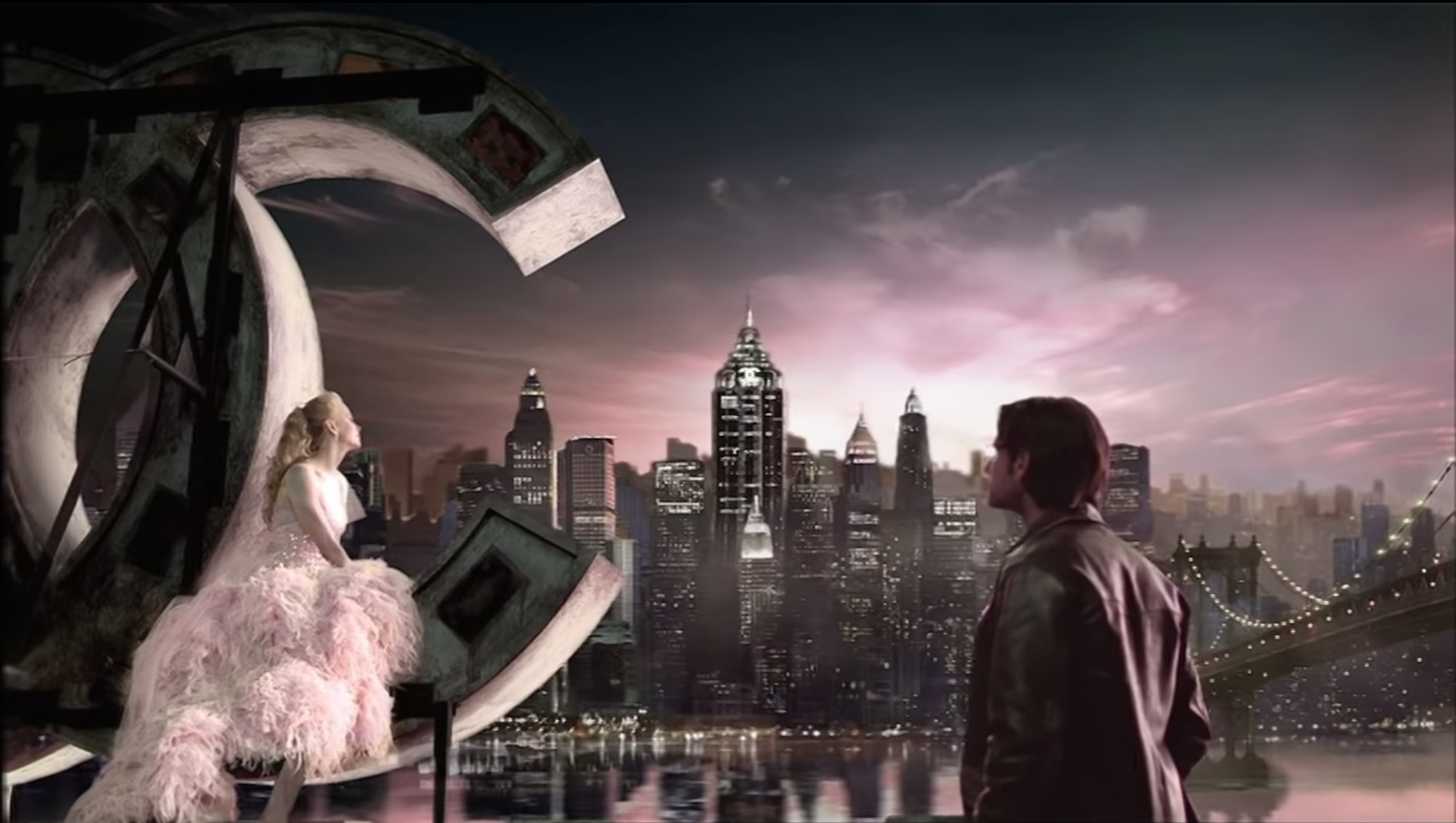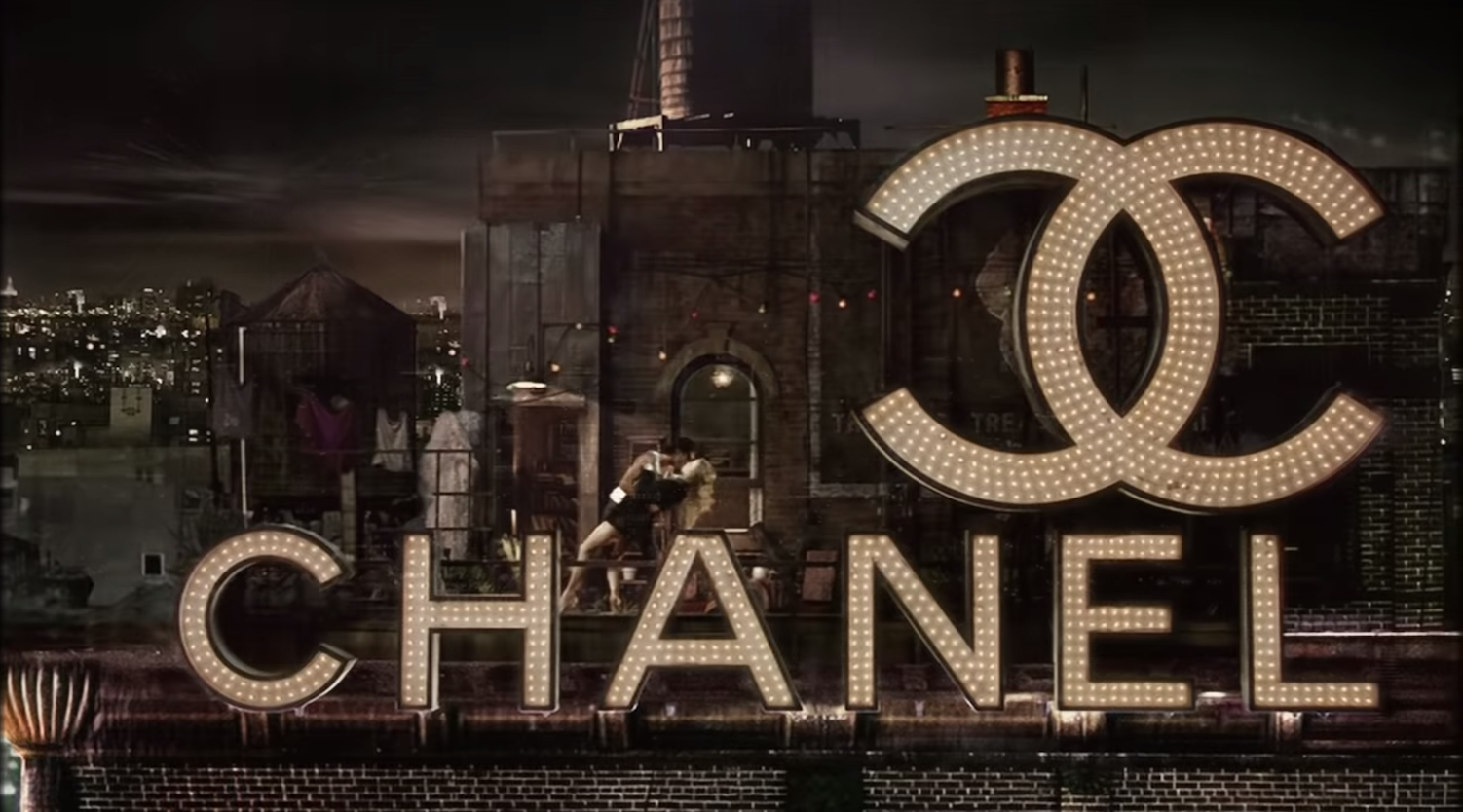
In 2004, Chanel paid $33 million for 180 seconds worth of commercial to advertise its iconic scent, Chanel No 5. It remains one of the most expensive adverts of all time, not least because it starred Nicole Kidman (who was reportedly paid $3 million for it), and Rodrigo Santoro (serving eye candy roles in Love Actually and more recently, Westworld) and was directed by Baz Luhrmann, at that time most widely known for Romeo + Juliet (1996) and Moulin Rouge (2001).
Titled The Film, the plot was simple. A famous celebrity flees from the paparazzi through a distinctly sanitised New York City, only to seek refuge in a cab with the one man who does not know who she is. What are the chances? After spending several days languishing in his romantically down-at-heel apartment, which also happens to have a giant Chanel sign on the rooftop, on which Kidman cringingly declares “I’m a dancer, I love to dance!”, a moustachioed authority figure orders her to return to her glitzy lifestyle.
Cut to a red carpet premiere, where she assumes her star status, once again flanked by hordes of photographers. For a brief moment, she looks back at the roof where her romance unfolded, and spots her lover casually perched on the supersized, interlocking “C”s. They smile at each other wistfully, before she turns away to reveal a gigantic diamond pendant inscribed with the words “No 5”. Santoro’s breathy voiceover revels in “her kiss, her smile, her perfume.”
“The Film paved the way for a slew of commercials that have become more abstract and bewildering as time has gone on”
The cinematic scope of this production sets it apart from a genre of fashion advertising that has always been utterly surreal. After all, you can’t broadcast a scent, meaning that all sorts of creative ingenuity has been employed in order to convey a specific sensorial allure. Brands such as Yves Saint Laurent and Giorgio Armani, who called upon David Lynch in the 1990s, and Jean Paul Gaultier, whose sexy sailor scene arguably redefined the market for men’s perfume, had already established a distinct style that eschewed reality in favour of high-octane, unadulterated glamour.
However, in The Film, Luhrmann ups the ante, effectively creating a mini feature film. Unlike most adverts, which place their product front and centre, there is no bottle in sight. Chanel is selling more than perfume, it’s selling a fantasy lifestyle.

The Film paved the way for a slew of commercials that have become more abstract and bewildering as time has gone on. Charlize Theron has been dipped in gold for Dior on numerous occasions, and who can forget Julia Roberts grinning maniacally while standing in a fountain for Lancôme? Of course, any of the Dior Sauvage spots, where Johnny Depp is buries jewellery in the sand and spouts philosophical musings, remain a head scratcher.
The Film is arguably the epitome of luxury perfume aesthetic, not only because it embraces an extraordinary level of camp glamour, but because it was just so darn expensive. In 2004 the world was not at its best, but it was still three years away from the biggest financial crash in 80 years. The advert is almost like a forewarning of the dangers of extravagance and indulgence being slathered over something so superficial. Okay, Chanel probably didn’t know there was a crash around the corner, but did it really need to spend $33 million on two minutes of film?
“In the wake of a global financial crash, the level of excess and opulence feels ludicrous in its frothy optimism”
The short answer is yes, seeing as they did much the same thing a decade later. In 2014, Chanel and Luhrmann reunited to release The One That I Want, a confusing three-minute film starring Gisele Bündchen, compete with a rendition of the eponymous song from the musical Grease. It features Chanel-themed surfing, photoshoots and jazz clubs. This time around, the brand kept quiet about the cost, but likelihood is it set them back a pretty penny, as Bündchen was the world’s highest paid model at the time.
In the wake of a global financial crash and life-altering pandemic, the level of excess and opulence in the original Chanel film feels ludicrous and overwhelming in its frothy optimism. Considering the current climate, will we see a change in how luxury brands engage with their audiences? Will they realise that the world isn’t necessarily ready or in need of aspirational scenes of insane wealth and beauty, or will they decide on the opposite? Either way, Chanel No 5 still remains one of the world’s most bought perfumes. Maybe Nicola Kidman dancing on a roof really is what people want after all.




